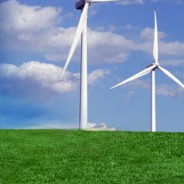ERCOT Modeling Issues – Scenarios vs. Sensitivities
ERCOT released a new 10 yr system assessment. The big news among the renewable community is a “scenario” labeled BAU All Tech with Updated Wind Shapes. In this “scenario”, they have updated the wind profile (capacity factors) for the wind technology option. The surprise from the output was the large swing from the BAU case to install 17,000 MW of wind, which did not occur in the base. In addition, the combined cycle units fell by 10,000 MW. Also solar added 10,000 MW into the system versus the BAU. I have nothing against renewable, in fact I am pro renewable in many ways, however I am skeptical on these results. My skepticism is focused on the one supposed change made by the modelers for this “scenario”. By changing just windshapes, they were able to produce these dramatic swings from the BAU case.
I have been modeling power systems for over 10 years and I cannot rationalize this outcome without more knowledge than what was presented in the paper. Let me start out with the basic concerns before moving over into the technical realm. The BAU case vs. this new wind case drops gas consumption by around 40%. If this wind profile enhancement was driven by turbine technology, then the rest of the country would also add to the lessening of natural gas demand. Anything greater than a 10% change in natural gas demand will surely impact the price of natural gas. A true scenario would iterate and or rationalized this issue. This type of analysis seems to be more of a sensitivity analysis versus a real scenario development. Another fundamental concern is the extent of wind development and the on-going production tax credit (PTC). At some point in the wind penetration, the PTC would be removed. I am sure the non-wind blessed state would like to stop subsidizing states, particularly whose economy is much better off.
Another fundamental missing piece is any discussion on rates. More capital is being spent in the wind shape case than the BAU. This is simple math, as the cost of capital of wind and solar for each MW is greater than gas units. The balancing act is the long-term fuel cost will balance the additional capital. However large capital investments usually require some guarantees. This comes in the form of Power Purchase Agreements with the local utility. The PPA’s are signed and prices set based on the current markets as that time of the contract. Even though wholesale market prices may come down it does not mean rates will change as PPA contracts are typically fixed in order for the investor to know they will recover their capital investment. Over time the PPA deals will begin to look worse and worse as wholesale markets fall. Eventually industrial and commercial customers could become wise and remove themselves from the utilities poor PPA arrangements by creating distributed generation. This then lead to higher residential rates in the face of low wholesale power. This then leads to limited PPA deals. With more than half of the wind and solar build after 2020 one would need to seriously doubt the extent of those developments becoming real, assuming PPA is the mechanism for development.
On a technical basis the major issue lies in how the modelers are treating wind generation. As a panel of experts, including me, in a report done for the Northwest Power & Conservation Council noted wind generation, when sufficiently large relative to the market, should be viewed in a risk analysis as much as in the price of natural gas is commonly analyzed. The dependence on wind to the level seen in this new wind shape case will likely caused some dramatic grid events when the weather decides to not co-operate. This event may be 1 in 10 years to 1 in 100 years, but the point is not if, but when. Given the nature of weather and the sub hourly nature of electricity markets, I would suspect the issue will be closer to 1 in 10 years than 1 in 100 years. It is certainly possible to expect a weather front changing the landscape of wind generation in particular day, adding on top of that a drought situation limiting nuclear and fossil generation. In a stress case, the grid will likely fail in the new wind shape case. The value of the combined cycle will likely be re-gained in risk analysis. This once again will limit the number of wind builds presented by ERCOT in this new wind shape case.
As noted in the NWPCC report, I have had extensive experience in modeling power systems for market forecasting and planning purposes. If you are beginning your resource plan or are looking for another perspective, please do consider reaching out to me for assistance.
Your Energy Consultant,
614-356-0484


